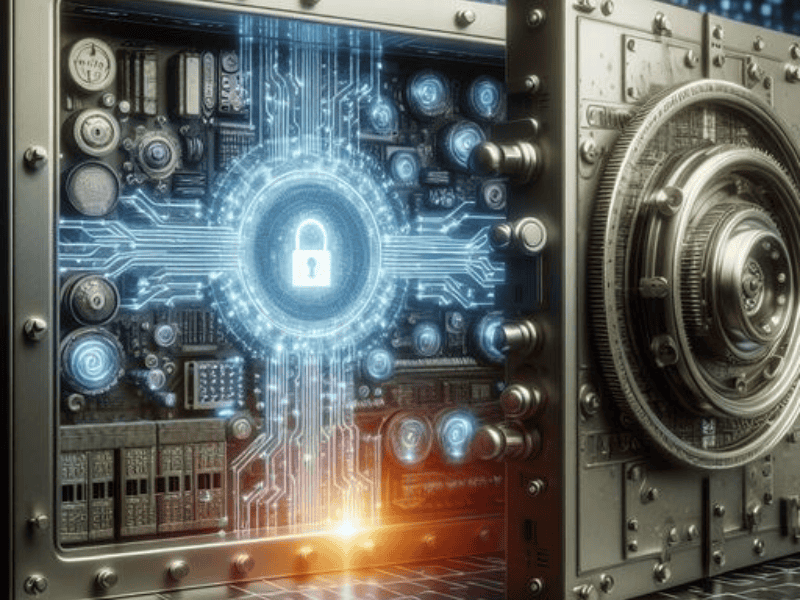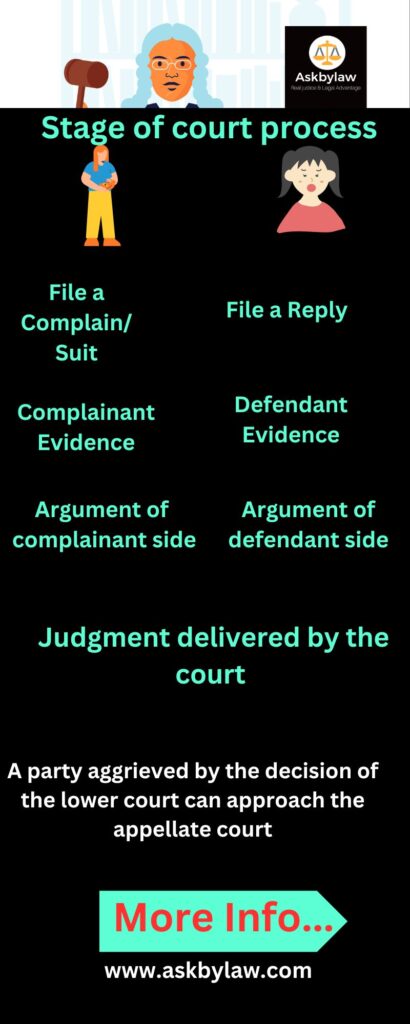

AI trade secrets are a hotly debated topic and can also be called a solution to an emerging need. By checking the SWOT analysis and cost-benefit ratio of AI, it can be known that, shortly, we will understand the performance, future, uses, and limitations of this artificial intelligence (AI) and its commercial use in business. It can be said that the rate of progress will increase. Computer science has made unlimited inventions. It is necessary to evaluate, from a legal point of view, whether this invention of AI will help every small business grow. Connect with us to understand more about AI trade secrets.
- Information must have commercial value to qualify as a trade secret. Because it is kept secret, and this means that the information provides the holder with a competitive advantage.
Trade secrets should be known only to a limited group of people, keeping business information confidential ensures that competitors cannot Gain access to it.
The rightful holder of information should take reasonable steps to maintain confidentiality, such measures may include the use of confidentiality agreements with business partners and employees.

Recently, artificial intelligence systems span various domains, revolutionizing how we approach tasks previously handled by humans. From artistic endeavors to financial transactions, the impact of AI is undeniable. However, this technological leap forward also raises concerns. How can we ensure that artificial intelligence works diligently and safely?
The European Union's Artificial Intelligence Act (AIA) aims to address these challenges by emphasizing human-centric, trustworthy, and ethical AI systems for European markets. In today's article, we have tried to do a thorough analysis of AI with you.
In today's article, we explore the delicate balance between disclosure obligations and trade secret protection in the context of AI. While the technical details of artificial intelligence (AI) often contain information not verified for trade secret protection, exceptions to artificial intelligence also exist. We are navigating together the access and privacy of the AI trade secret through this article, and we explore the tension between protecting critical AI insights and trade secrets. Feel free to take the initiative by commenting on the article or let us know if you want to engage more deeply. Do you know what the future of AI is?
Let’s delve into the world of trade secrets and their significance in the realm of intellectual property.
A trade secret is a form of intellectual property (IP) that revolves around confidential information. Unlike other registered IP rights, trade secrets are not publicly disclosed. Instead, their owners safeguard this valuable information from competitors by implementing special procedures and both technological and legal security measures.
For information to qualify as a trade secret, it must meet the following criteria:
The information is valuable because it is secret.
Only a restricted group of individuals knows about it.
The rightful holder takes reasonable steps to keep it confidential, including using confidentiality agreements with business partners and employees.
In the previous paragraph, we tried to find out what AI trade secret?. Now let us try to know about trade Secret versus other intellectual property Let’s compare trade secrets with forms of IP:
Patents protect inventions and grant exclusive rights for a specified period. However, patents require full disclosure, whereas trade secrets remain undisclosed.
Copyrights safeguard creative works (e.g., literature, music software). Unlike trade secrets, copyrights are publicly registered.
Trademarks protect brand names, logos, and symbols. They are publicly registered, whereas trade secrets remain confidential.
Trade secrets encompass confidential information (e.g., formulas, know-how) that provides a competitive edge. They are not recorded with authorities but are crucial components of IP portfolios.
In the field of artificial intelligence (AI) @ Machine learning, trade secrets play a pivotal role. Companies often guard their proprietary algorithms, training methodologies, and unique data processing techniques as trade secrets.
By doing so, they maintain a competitive advantage without revealing their inner workings to the public. These undisclosed AI trade secrets contribute significantly to innovation and technological advancements.

In the previous first paragraph, we tried to know what is an AI trade secret? And in the second paragraph, we tried to learn about the sense of AI trading secrets. Now in the third paragraph, let us explore the fascinating world of AI trade secrets and how they can be effectively protected.
AI-generated information and related components can indeed qualify as trade secrets. Here’s what can be protected:
The intricate sets of rules or instructions that AI systems use for data analysis or problem-solving can be safeguarded as trade secrets1. These algorithms often form the backbone of AI applications.
The data used to train AI models, whether supervised or unsupervised, can be considered a trade secret. These datasets are valuable and unique to each organization.
Aggregated data, patterns, and compilations used in AI processes can also fall under trade secret protection.
Proprietary code that powers AI systems can be kept confidential as a trade secret.
Identifying valuable AI trade secrets involves considering the following factors:
Trade secrets must have independent economic value due to their confidentiality. If the information provides a competitive edge, it meets this criterion.
The information must remain undisclosed and not be generally known or readily ascertainable. AI-generated content that only the AI system knows qualifies.

Let’s delve into the importance of protecting machine learning/Artificial Intelligence AI trade secrets and explore the legal framework, strategies, and enforcement aspects.
Trade secrets play a crucial role in safeguarding AI innovations. Here’s why:
AI trade secrets provide a competitive edge. By keeping algorithms, training data, and unique methodologies confidential, companies maintain an advantage over rivals.
Unlike patents, which involve public disclosure and formal registration, trade secrets are cost-effective. No government agency needs to approve or grant protection
Trade secrets can last indefinitely as long as they remain undisclosed and valuable. Patents, on the other hand, have limited terms.
Trade secrets allow creators to protect a wide range of AI-related information, from algorithms to data sets, without adhering to rigid patent requirements.
To effectively protect AI trade secrets, consider these strategies:
Limit access to sensitive AI information. Only authorized personnel should handle AI trade secrets.
Use non-disclosure agreements (NDAs) with employees, contractors, and collaborators. These agreements legally bind the parties to maintain secrecy.
Employ robust security protocols to prevent unauthorized access or leaks.
Secure physical locations where AI trade secrets are stored.
Educate and well-train your staff about the importance of confidentiality and their role in protecting trade secrets.
When breaches occur:
Promptly investigate any suspected breaches.
If necessary, pursue legal action against violators. Remedies may include injunctions, damages, or restitution.
Understand that trade secret laws vary globally. Seek legal advice tailored to the relevant jurisdiction.
Maintain records of trade secret protection efforts. This documentation strengthens legal claims in the case of legal disputes.

Let’s delve into the fascinating intersection of AI trade secrets and the challenges they pose.
Generative AI platforms, including large language models, have revolutionized content generation by analyzing data and producing original work based on training data and user prompts. However, these tools also present a unique threat to a company’s trade secrets. Here’s why:
Employees using generative AI applications might inadvertently input sensitive information, including trade secrets. Once captured, this information becomes part of the AI model and could compromise trade secret protection.
Under the Defend Trade Secrets Act (DTSA) and similar state statutes, trade secret owners must take “reasonable measures to keep such information secret.” These measures are essential for maintaining a company’s competitive edge and distinctiveness in the market.
To safeguard trade secrets while benefiting from generative AI, consider the following protective measures:
Encrypt sensitive data used in AI applications and restrict access to authorized personnel.
Implement AI-driven tools to detect potential trade secret leaks within generative AI systems.
Educate and Well-trained employees about the risks associated with AI tools and emphasize the importance of safeguarding trade secrets.
Leverage blockchain to ensure data integrity and prevent unauthorized modifications.
Understand international regulations and collaborate with legal experts to navigate cross-border challenges.
While prohibiting generative AI use is one solution, companies can strike a balance by adopting protective measures. By doing so, they can harness the power of AI while safeguarding their valuable trade secrets
| ASPECT | TRADE SECRET | ARTIFICIAL INTELLIGENCE (AI) |
| Definition | Information that is not generally known or reasonably ascertainable gives a business an economic advantage over competitors who do not know or use it. | Used to analyze large data sets, improve decision-making, automate tasks, and enhance product personalization. |
| Protection | Protected through confidentiality agreements, non-disclosure agreements, and secure business practices. Not registered with any governmental body. | AI models and algorithms can be protected under copyright law, but the data and insights they generate can sometimes be trade secrets. |
| Key concern | Keep the information secret, preventing unauthorized access and disclosure | Ensuring ethical use, avoiding bias, maintaining transparency, and understanding of decision-making processes. |
| Usage in Business | Used to maintain competitive advantages, enhance productivity, and safeguard proprietary methods or formulas. | Used to analyze large data sets, improve decision-making, automate tasks, and enhance product personalization. |
| Legal Framework | Governed by specific laws such as the Defend Trade Secrets Act (DTSA) in the U.S. Or the EU Trade Secrets Directive in Europe. | Subject to general intellectual property laws, data protection regulations, and emerging specific AI regulations. |
| Challenges | Risk of theft or accidental disclosure; maintaining secrecy can limit collaboration. | It requires significant data input, can be expensive to develop, and raises issues of privacy & control over AI decisions. |
| Value | The value lies in the exclusivity and confidentiality of the information. | The value lies in the capability to perform tasks that would otherwise require human intelligence. |
| Lifecycle | Indefinite as long as secrecy is maintained. | It may become obsolete as technology advances or as better algorithms are developed. |
AskByLaw aims to foster leadership, development, and balance through its online presence, increasing the legal awareness of citizens and the contribution of artificial intelligence to international trade. To help and engage corporate clients, The Askbylaw Law Firm has decided to publish an informative framework, i.e., articles, to answer common legal concerns and questions about AI and AI-driven business.
A blog titled "Navigating AI Trade Secrets of Complex Terrain: A Legal Perspective", has been written by an experienced legal expert. Based on this, he is recognized as an influential authority on AI law. He has provided an in-depth insight into the AI trade secrets as an illustrated and accomplished writer
In an AI trading conflict that arose between the two Saga brothers, Askbyalo provided a clear outline for preventing AI trading theft, along with experienced tips for dealing with such a question. And winning legal victories by handling our client queries with high-profile facilities.
| Country | Legal Framework | Protection Mechanisms | Enforcement | Challenges |
|---|---|---|---|---|
| United States | Defend Trade Secrets Act (DTSA), State laws | Strong litigation Framework, Federal Jurisdiction | Varies by the member state, Generally strong | Identification of Secrets, proving misappropriation |
| European Union | EU Trade Secrets Directive | Civil Remedies, Injunctions, Corrective measure | A Trade secret is protected under: .-Common law -Contract Act - Information Technology Act -Competition Act | Variation in implementation across state member |
| Australia | Corporations Act Common Law | Injunctions, Damages, Account of profits | Enforcement through courts | Balancing confidentiality with discloser requirements |
| Germany | Act on the Protection of Trade Secrets | Civil Remedies, cessation and desist order, Damages | Enforcement through civil litigation | High standards for maintaining secrecy |
| Italy | Industrial Property Code( Codice della Proprieta Industriale) | Injunctions, Damages, Removal of Infringing Products | Civil Law enforcement, occasionally criminal sanctions | Legal complexities, procedural challenges |
| Japan | Unfair Competition Prevention Act | Prohibition of improper acquisition, use, and disclosure | Civil and Criminal penalties | Cultural emphasis on negotiation over litigation |
| India | A Trade secret is protected under: .-Common law -Contract Act - Information Technology Act -Competition Act | Injunctions, damages based, equitable principle | Primary civil remedies, slow judicial process | Lack of Statutory law specific to AI trade secrets |
Identify the AI components that are critical to your business. These could be algorithms, training data, or proprietary models.
Ensure that employees handling AI systems understand the importance of trade secrets and their role in protecting them.
Limit access to AI-related systems and data. Implement strong authentication mechanisms.
If using third-party AI tools, assess their security practices and ensure they align with your trade secret protection goals.
Require employees, contractors, and collaborators to sign robust confidentiality agreements.
Conduct periodic audits to verify compliance with trade secret protection protocols.
Establish specialized teams responsible for AI development and trade secret protection.
Collaborate closely with intellectual property (IP) attorneys to navigate complex AI-related legal issues.
Implement strict data governance policies. Regularly review access controls and data handling practices.
Consider patenting AI-related inventions where possible. While patents don’t protect trade secrets, they complement the overall IP strategy.
Develop robust incident response plans for AI-related breaches. Be prepared to act swiftly if a trade secret leak occurs.
Continuously educate employees about AI ethics, trade secrets, and compliance.
Commercially valuable: It must have economic value because it is a secret.
Known only to Limited, Groups: The knowledge should be restricted to a select group of individuals.
Subject to Reasonable Steps for Secrecy: The rightful holder of the information must take reasonable measures to keep it confidential, including using confidentiality agreements with business partners and employees.
Trade secrets can include secret formulas, algorithms, data processing techniques, source codes, customer lists, know-how, or other valuable information that gives businesses a competitive edge. If you have any more questions regarding AI trade secrets, feel free to ask
Data Security Vulnerabilities: The extensive reliance on AI technologies involves the collection, cyber-attack, espionage by competitors, inadvertent disclosure through employee or third-party storage, and processing of vast amounts of sensitive data.
Insider Threats: Employees or insiders with access to trade secrets can pose risks.
Reverse Engineering Risks: AI applications can potentially reverse-engineer trade secrets.
Cross-Border Legal Complexities: Trade secrets may be exposed across international borders, complicating legal protection.
Evolving Cyber Threat Landscape: As AI evolves, so do cyber threats that can compromise trade secrets.
Access Controls: Limit access to sensitive information only to authorized personnel.
Confidentiality Agreements: Use non-disclosure agreements (NDAs) with employees, contractors, and partners.
Encryption and Data Security: Safeguard data through encryption and robust cybersecurity practices.
Physical Security Measures: Secure physical access to servers, labs, and facilities.
Monitoring and Auditing: Regularly monitor and audit access to trade secrets.

In today's article, we learned that in the complex landscape of AI trade secrets, striking the right balance between transparency and privacy is paramount. As organizations harness the power of AI algorithms, they grapple with the delicate dance of revealing just enough to build trust while protecting proprietary information.
AI expert Elon Musk has also been openly discussing artificial intelligence at length. Elon Musk expresses his thoughts on a regular page on his X platform.
Our journey through this article has highlighted the challenges facing innovators, legal experts, and policymakers alike. The European Union's Artificial Intelligence Act (AIA) emphasizes the need for responsible disclosure, emphasizing the importance of human-centric AI systems. However, the fine line between protecting trade secrets and promoting transparency is blurred.
As we conclude, consider this: AI's transformative potential lies not only in its algorithm but also in the ethical frameworks that govern its deployment. By promoting collaboration, knowledge sharing, and responsible practices, we can navigate the complex web of AI trade secrets with integrity and foresight.
Remember, the future of AI depends on our ability to balance innovation with accountability. Let's tread this path wisely, ensuring our trade secrets are protected while pushing the boundaries of artificial intelligence.
Feel free to expand on this conclusion and express your thoughts via comments, or let us know if you'd like to engage in a more in-depth discussion.
GET IN TOUCH




Founder And Main Partner of Askbylaw Associates






As per the foundations of the Bar Council of Bharat (India), Advocate Viren.S.Dave isn't permissible to solicit work and advertise. By clicking the “Agree” button and accessing this web site (www.asklbylaw.com) the user absolutely accepts that you just Maineasure seeking info of your own accord and volition which no kind of solicitation has taken place by me.The info provided below this web site is exclusively accessible at your request for information functions solely. It mustn't be understood as soliciting or advert. Advocate Viren.S.Dave isn't accountable for any consequence of any action taken by the user hoping on material / info provided below this web site. In cases wherever the user has any legal problems, he/she altogether cases should obtain freelance legal recommendation.